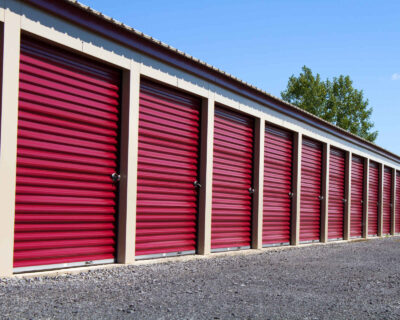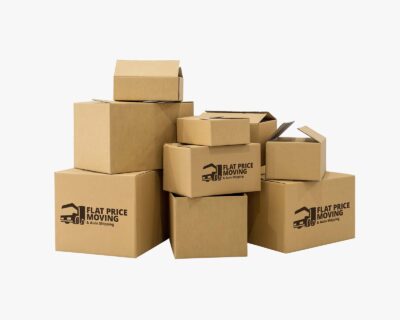Tips for Shipping Musical Instruments Across the Country
Cross-country moving can be a thrilling yet complicated task, especially for those passionate about music and who have invested time and money into their precious instruments. Shipping musical instruments across long distances demands careful planning, expertise, and attention to detail. Whether you need best practices for moving pianos, vintage guitars, or delicate violins, this comprehensive guide on how to ship musical instruments will help you orchestrate a harmonious transition during your cross-country move.
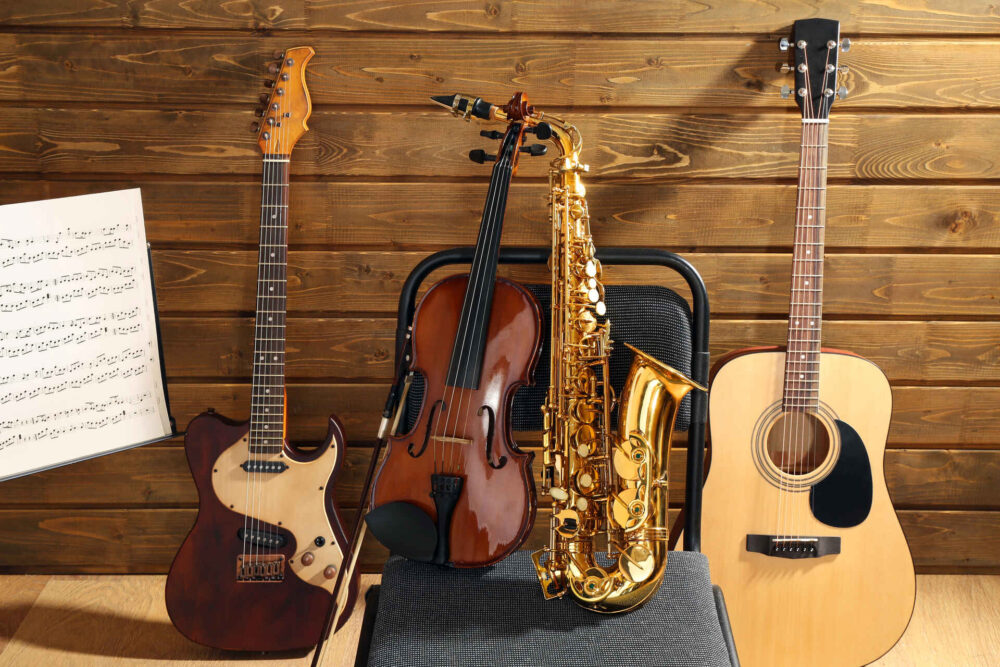
A cross-country instrument move involves varying costs depending on factors like size and distance. It is entirely possible to ship these instruments, and the choice of a transportation company depends on factors like location, instrument size, and budget. To ensure safe transport, proper packaging is crucial for preparing instruments for long-distance moves, including using hard or custom cases, adequate cushioning, and purchasing insurance.
Before Transporting Musical Instruments, Understand Their Vulnerabilities
When it comes to shipping musical gear, a critical factor to consider is the unique vulnerabilities of each instrument category. Understanding these vulnerabilities is essential to ensure the safe move of your cherished musical gear.
When transporting wind and string instruments, for example, climate-controlled shipping, as well as humidity control during transport, is crucial for temperature-sensitive instrument care and safe instrument relocation.
String Instruments – Sensitivity to Humidity and Temperature
String instruments like violins, cellos, and guitars are particularly sensitive to changes in humidity and temperature. Variations in these environmental factors can cause the wood to expand, contract, or warp, potentially leading to damage or even permanent alterations in tone and playability, which is why secure packaging for guitars, pianos, violins, etc., is so important.
Wind Instruments – Fragile Components and Susceptibility to Denting
Wind instruments, including flutes, clarinets, and brass instruments, have intricate components that require careful fragile item handling. The brass of trumpets and trombones can dent easily, affecting their sound and playability. The keys and valves of woodwinds can also be susceptible to damage. Proper padding and protection are essential to prevent these sensitive parts from being compromised during transport.
Percussion Instruments – Bulky Sizes and Protective Measures
Percussion instruments, such as drums and xylophones, often come in large and irregular shapes, making them challenging to pack and transport. The weight and size of these large items can pose logistical challenges as well. To safeguard these instruments during transport, it’s essential to secure them in sturdy custom instrument cases or crates and use adequate padding to prevent internal components and surfaces from damage due to jostling or impact.
Keyboards – Weight Considerations and Internal Component Protection
Keyboards, such as pianos and electronic synthesizers, present unique challenges due to their considerable weight and internal components. Grand pianos, for example, can weigh thousands of pounds, making their transport a complex undertaking. Properly securing these instruments in specialized containers and taking measures to protect their internal mechanisms from shocks and vibrations are crucial steps to ensure their safety during relocation.
In summary, comprehending the vulnerabilities specific to each category of musical instrument is vital before shipping them cross-country. By addressing these vulnerabilities through appropriate packaging with protective materials for instruments, climate control, and careful handling, musicians can significantly reduce the risk of damage and ensure that their precious items arrive at their new home in optimal condition.
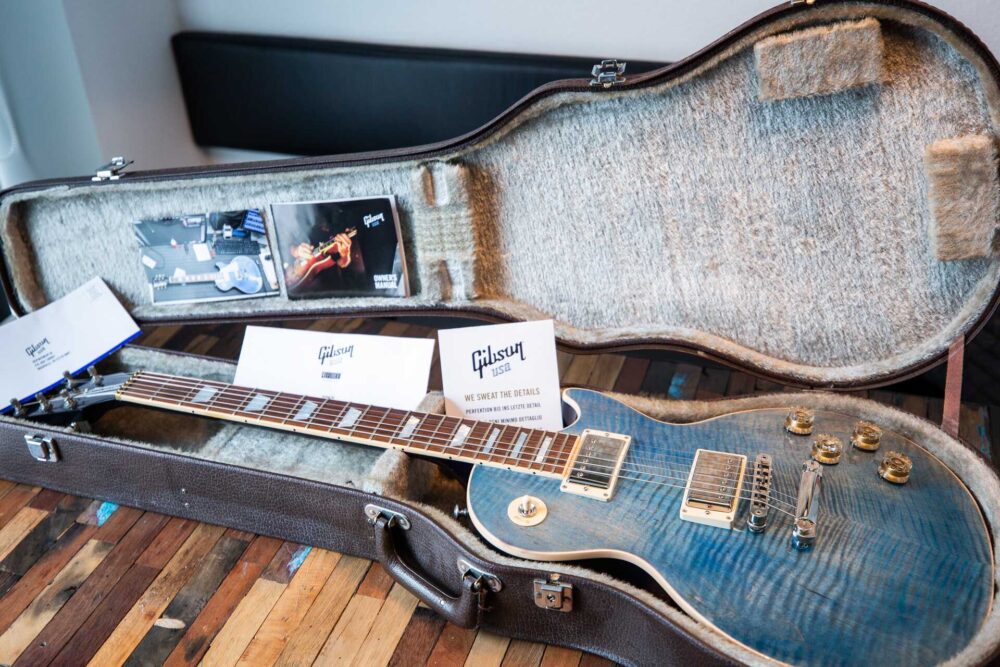
General Tips for Preparing Instruments for Shipping
Shipping musical instruments requires meticulous preparation to safeguard them from potential damage and other relocation mistakes during transit. Here are some general moving tips to ensure your instrument is well-prepared for the journey ahead.
Clean & Maintenance – Ensuring Instruments are in Their Best Condition Before the Move
Before packing your musical instruments, give them a thorough cleaning to remove dust, dirt, and grime that may have accumulated. This step is crucial, as any contaminants left on the instrument’s surface can become abrasive during transportation, potentially causing scratches or damage. Additionally, ensure that your instrument is in optimal playing condition by addressing any necessary repairs or maintenance tasks.
Loosening Strings – Reduce Tension for Guitars and Violins
For string instruments like guitars, violins, and cellos, it’s advisable to loosen the strings before shipping. Reducing string tension can help prevent the instrument’s structure from being stressed or warped during transit, especially if exposed to extreme temperature and humidity changes. However, be cautious not to detune the strings excessively to avoid damage to the instrument’s neck or bridge. Watch this video if you need more help on how to loosen a guitar’s strings.
Dismantling – Taking Apart Instruments That Can Be Safely Disassembled
In some cases, instruments with detachable components or accessories can be safely disassembled to reduce their size and make them easier to pack securely. For instance, removing the neck from an electric guitar or taking apart a drum kit into its individual components can simplify the packing process. Just be sure to keep track of all removed parts and pack them carefully to avoid misplacement or damage.
Cushioning – Using Bubble Wrap, Soft Cloth, and Other Materials to Prevent Scratches
To protect your musical instruments from scratches and minor impacts, use packing materials such as bubble wrap, soft cloth, or foam padding. Wrap the instrument carefully, ensuring that all exposed surfaces are shielded from potential contact with other objects or surfaces. Pay special attention to fragile items, such as bridges, keys, or delicate finishes.
In conclusion, meticulous preparation for the move is key to ensuring the safe transportation of your musical gear. Cleaning and maintaining, loosening strings, considering safe dismantling when applicable, and providing adequate cushioning are essential steps to minimize the risk of damage during transit and ensure that your instrument arrives at its destination in the best possible condition.
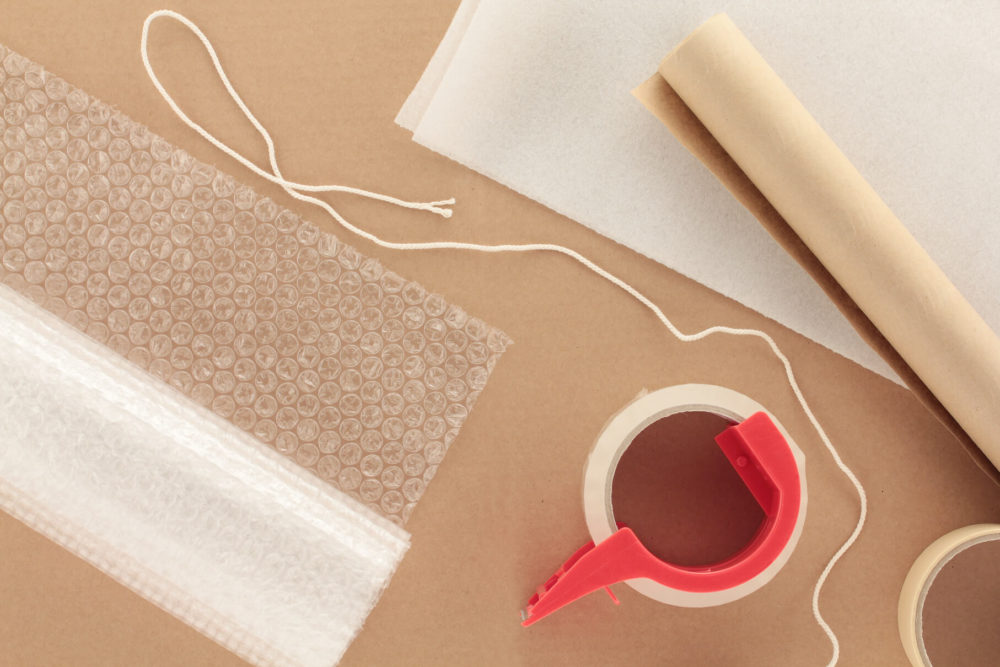
Packing Solutions for Different Instruments
When it comes to packing musical instruments for shipping, choosing the right packaging solution is paramount to ensure their safety throughout the journey. The choice of packaging largely depends on the type and fragility of the instrument. Here are two key approaches you should consider.
Original Cases – Using Original Hard Cases for Protection
Many instruments, such as guitars or violins, for example, come with their original hard cases. These cases are specifically designed to fit the instrument snugly, providing excellent protection during transportation. They are often equipped with cushioning, padding, and secure latches to prevent damage from impacts, temperature changes, and humidity fluctuations. Whenever possible, using the original hard case is a practical and effective way to safeguard your instrument – it’s one of the best instrument packing tips.
Specialized Packaging – When to Invest in Custom Cases
For instruments that do not have original hard cases or for those that require extra protection due to their fragility or irregular shape, investing in custom-made cases or packaging solutions is a wise choice.
Custom cases can be tailored to the precise dimensions of the instrument, ensuring a secure fit and optimal protection. These cases often feature advanced shock-absorbing materials and climate control options, which are particularly beneficial for high-value or vintage instruments. While custom cases represent an additional expense, they are a valuable investment.
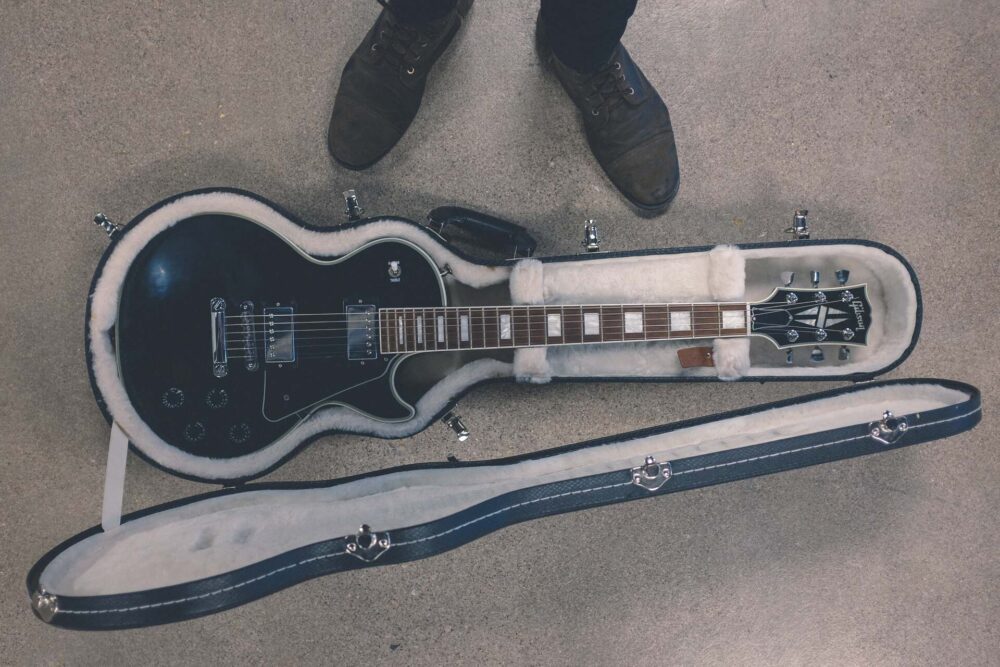
Choosing the Right Moving Service
Choosing the right long-distance moving services for safe musical gear transport is a crucial decision that hinges on two pivotal factors: moving insurance and the cross-country movers’ reputation. First and foremost, it’s imperative to ensure that your valuable and delicate items are adequately insured during transit, safeguarding against potential damage, theft, or loss. Carefully scrutinize the insurance coverage provided by the long-distance moving company and consider obtaining additional transport insurance for instruments if necessary.
Equally important is the research phase, during which reading instrument shipping reviews and seeking company recommendations play a pivotal role. Delve into online reviews and testimonials, particularly from individuals who have entrusted the moving and car shipping company with musical instrument transportation, to gain insights into their experiences. Check if a company is legitimate on sites like the Better Business Bureau.
Additionally, consult fellow musicians, music stores, or educators who can offer firsthand recommendations based on their knowledge of reputable long-distance movers. By prioritizing insurance and reputation, you can choose a reliable company, ensuring that your beloved instrument arrives at its new destination unharmed and with the peace of mind that comes from working with a reliable moving and auto transport company.
Auto-Transport
If your first concern is having your vehicle transported safely and efficiently, enclose shipping is the way to go.
Read moreStorage Service
Knowing what kind of surprises cross country move may hold, we offer 30 day free storage for belongings at the origin state.
Read morePacking Services
Our moving teams are trained to pack your belongings in the most efficient manner possible.
Read moreCost-Efficiency Tips
When planning a long-distance relocation with musical gear, it’s essential to manage costs and your moving budget effectively without compromising the safety of your cherished gear. Here are three key tips to ensure cost-efficiency during your move.
Comparative Shopping for Movers – Getting Multiple Quotes
One of the fundamental steps in cost-efficient relocation is to collect quotes from multiple moving companies. Not all moving services offer the same rates, and obtaining several estimates allows you to compare prices, services, and options. Ensure that each quote is comprehensive, covering all aspects of your move, from packing services and loading to transportation and unloading the moving truck.
This comparative shopping approach empowers you to make an informed decision based on both budgetary considerations and the quality of services offered. Remember that a lower price isn’t always the best option, and prioritize a moving company’s reputation and experience with musical gear.
Off-Peak Moving – Reduced Rates During Off-Season
Another strategy to save on moving costs is to schedule your move during the off-season, if possible. Relocation companies often offer reduced rates during periods of lower demand, such as the fall or winter months. Choosing an off-peak time can result in significant savings while still ensuring the safety of your instrument. Additionally, off-peak times typically offer more flexibility in scheduling, which can be advantageous for coordinating the transportation of delicate and valuable musical gear.
Avoiding Hidden Costs – Understanding the Complete Moving Contract
To maintain cost efficiency, it’s crucial to thoroughly understand the terms and conditions of your moving contract. Be vigilant about potential hidden costs that may arise, such as additional charges for specialized packaging materials or even last-minute adjustments to the moving schedule. Communicate openly with your chosen moving company to clarify any uncertainties and request transparency in the contract. A clear and comprehensive contract not only helps you budget effectively but also minimizes the risk of unexpected expenses during the move.

Summing Up the Musical Instrument Relocation Journey
Relocating cross-country and transporting your musical gear demands careful planning, meticulous preparation, and thoughtful consideration of various factors. By adhering to the guidance provided in this comprehensive guide, musicians and collectors can embark on their journeys with confidence, knowing that their instruments are ready for the transition.
However, if you want to ensure a safe transition for your musical gear, hiring specialized instrument movers who are experienced in handling and unloading instruments is the right choice. So, contact us at Flat Price Auto Transport and Moving company and allow our professional movers to transport your instrument safely.
FAQ
How Much Does It Cost to Ship a Musical Instrument?
The cost of shipping musical equipment can vary widely depending on several factors, including the instrument’s size, weight, value, shipping distance, and the level of insurance coverage required. It’s best to obtain quotes from different transportation companies or carriers to get an accurate estimate for your specific instrument and shipping needs.
Can I Ship a Musical Instrument?
Yes, you can ship a musical instrument. It is a common practice, especially for musicians and collectors who need to transport their gear for performances, sales, or relocations.
What Is the Best Shipping Company for Musical Instruments?
The choice of the best shipping company depends on various factors, including your location, the instrument’s size, and your budget. It’s essential to research and compare shipping options to find the one that best meets your requirements in terms of cost, reliability, and handling of delicate items.
What Is the Safest Way to Ship an Instrument?
The safest way to ship a musical instrument is to ensure it is properly packaged and protected. This includes using the instrument’s original hard case or a custom-made case when available, securing the instrument with adequate cushioning and padding, and choosing a reputable shipping company that specializes in handling delicate items.
Additionally, purchasing insurance for your instrument is highly recommended to provide financial protection in case of any damage or loss during transit. Proper packaging and careful handling are key to ensuring that your instrument arrives at its destination in the best possible condition.

